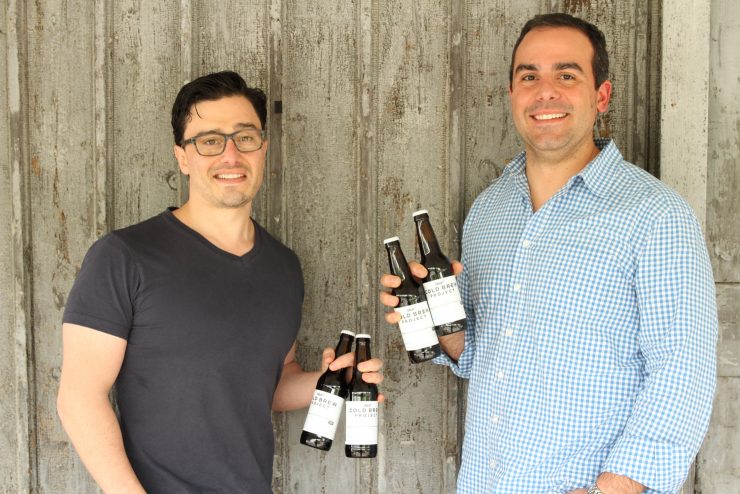
The brother-and-brother inventor team behind the BKON brewer are at it again, and they’re hoping it’s going to be a hot, hot summer. BKON founders and Sprudge advertising partners Dean and Lou Vastardis, whose “reverse atmospheric infusion” (RAIN) brewing technology entered the hot coffee and tea landscape in 2013, have applied their unique patented ideas to a faster and—they’re more than confident—much tastier way to do cold brew.
It’s a claim, of course, that many would love to make—to build a better cold brew, to take the flat flavors and lost acidity out of slow, overnight methods, and to take the coffee-wasting high doses of coffee often required out of the equation, too. Using the same vacuum-based, patented RAIN technology the BKON uses for coffee, tea, and even spirits infusions, BKON’s Cold Brew Project brewer aims to bring depth of flavor, preserved acidity, and nuance to cold coffee. And it can bring you five gallons of it in under 20 minutes.
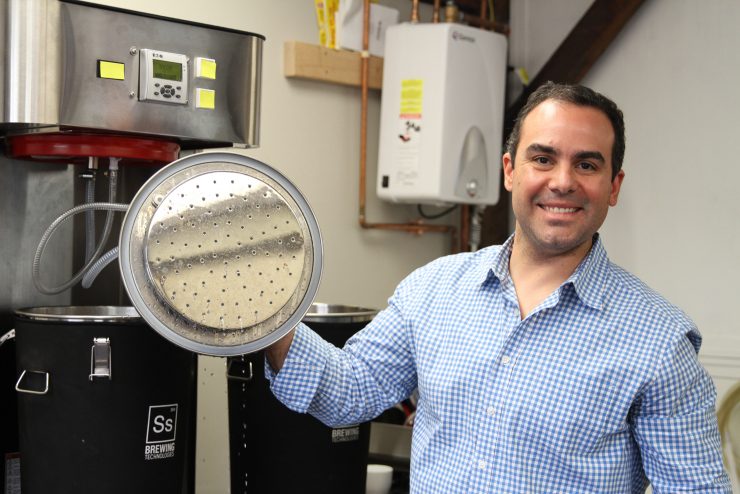
“We’re trying to make flavor super accessible,” Dean Vastardis told me on a late spring afternoon at the BKON headquarters in bucolic Moorestown, New Jersey, just outside of Philadelphia. His prototype for the cold brewer involves a hot-water delivery system, a shower head, and a vacuum—all programmed with a brand new, cold-brew-specific algorithm to deliver high-volume, high-speed, high-flavor cold coffee into a fermentation tank. The size of the tank can vary, Vastardis points out, which allowed the team to “create a logic that’s very easy to scale up.”
To the Vastardis brothers, the cold brewer’s scalability is almost as big an asset as its flavor potential. Seeing the huge growth in craft cold brew refreshment in recent years, the BKON team wanted to introduce something to market that had the potential to shift thinking as well as units.
“We want to support the industry to raise awareness of great cold brew,” said Dean Vastardis earnestly, while setting up a couple of rapid-fire cold brew batches from the brewer to taste.
From establishing flavor parameters (a 15-minute brew cycle makes it much easier to dial in desired flavors than waiting for a 12-hour steep) to replicating results across long distance, the BKON cold brewer offers the potential for roasters to better express what they want to in their cold-served coffees. Whether it’s for in-store serving via kegs or brewed to bottle, the ability to deliver a lot of cold brew crafted to exacting parameters may shift roasters’ mindsets towards what their cold coffee beverage service can really be.
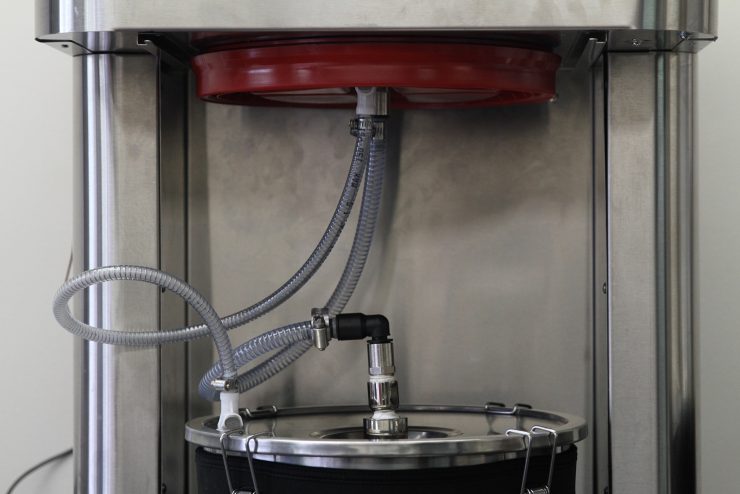
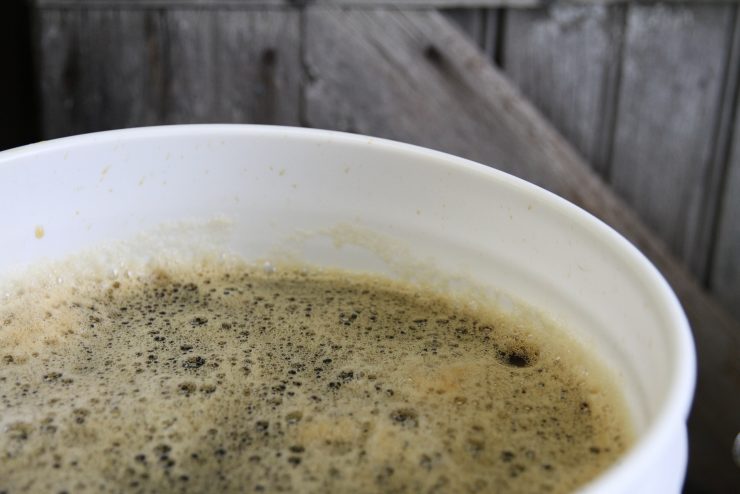
And unlike the original BKON brewer, the Cold Brew Project machines won’t be devices a coffee bar or restaurant can simply purchase and install. Instead, the Vastardis brothers plan on establishing long-term partnerships with roasters and retailers, the first of which is slated to be Miami’s Panther Coffee.
Broadening their cold brew capacities is essential for Panther, said co-owner Joel Pollock, whose shop serves cold-brew and iced beverages throughout the year.
Partnering with the BKON team on cold brew technology has allowed Pollock to experiment with both his cold brew blend as well as single origins, which are currently served at Panther cafes both Toddy-style and via nitrogenated casks. Most of all, Pollock says, he was impressed by the technology’s ability to express flavor.
“It just has a vivid nature,” said Pollock of the coffee. “It has a certain amount of depth, is a little bit more true. We know what we put into our cold brew blend, and this gives you a much more complete view of what the coffee is.”
A relationship with BKON—and its cold brew gear—will allow Pollock to fine-tune his cold brew offerings much more, as well as open the door for Panther to send whole bean coffee out of the Miami market to faraway cities for brewing to Pollock’s exact cold brew parameters. It’s a brand expansion that wouldn’t be feasible without a scalable, reproducible technology—shipping kegs of already-brewed cold brew out of market would be too impractical.
“Because we’re basically down here in Cuba and things need to be refrigerated,” Pollock laughed.
And how’s it work? The Cold Brew Project brewer relies on a less-than-hot temperature and RAIN vacuum cycles to penetrate the coffee quickly, necessitating far fewer coffee grounds than traditional slow-brew methods—up to 70% less, according to Lou Vastardis. It’s a feature which again allows for much more latitude to experiment at at the roaster level in terms of establishing flavor. Lou Vastardis believes the technology will “empower the roaster in the category of cold brew” by drawing on the roaster’s existing knowledge and palate, freeing them from the constraints of time and dulled flavor. To this end, the team is also hoping to build more partnerships in the culinary sphere, where they believe the potential of better-tasting cold brew is a largely untapped category.
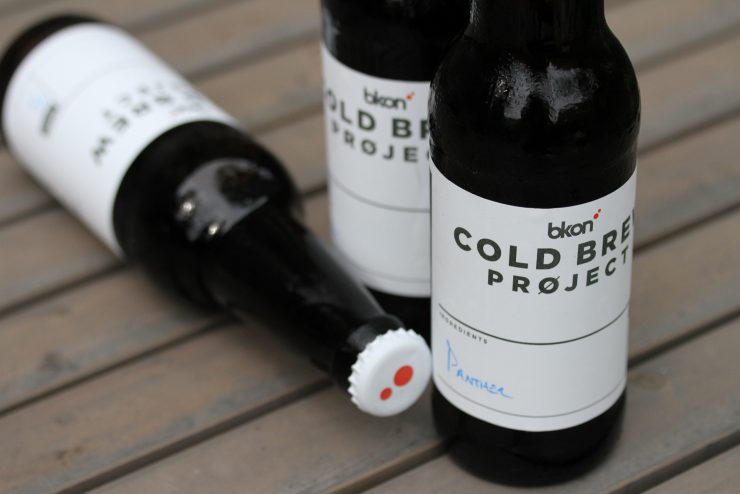
For now, the Vastardis brothers are hard at work on perfecting the cold brewer for summer deployment in multiple regions. They’ve also partnered with Philadelphia’s Yards brewery to work on food-safe bottling production—Dean Vastardis says the BKON cold brews continue to taste great for up to 60 days when correctly preserved. And while, unlike the BKON brewer, the cold brewer may never be a countertop showpiece, it could become the engine behind the scenes of a cold brew coffee revolution. At least that’s what two very inspired brothers are counting on, one reverse atmospheric infusion at a time.
Liz Clayton is the associate editor at Sprudge.com. Read more Liz Clayton on Sprudge.
The post BKON Bets Big On Better Cold Brew appeared first on Sprudge.

